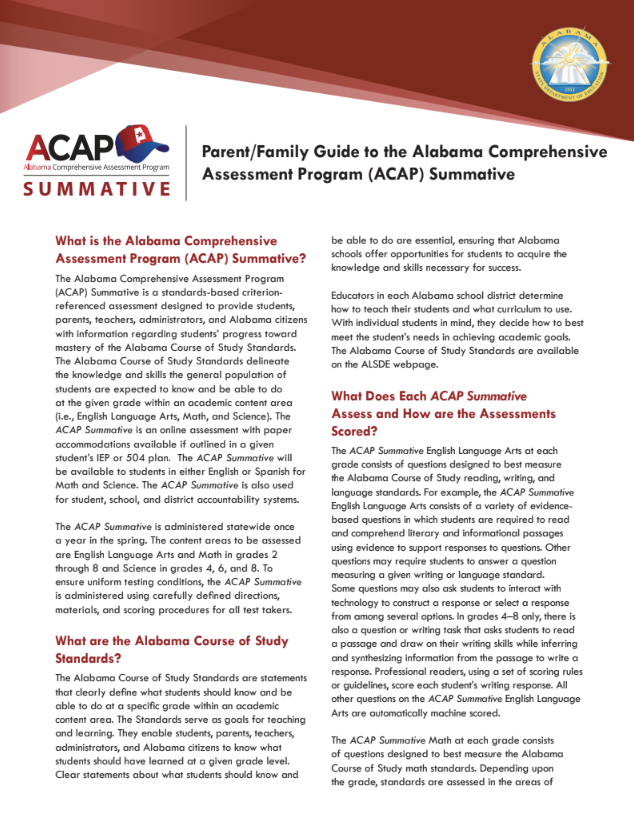What is the Alabama Numeracy Act?
The Alabama Numeracy Act (ANA) has been established to implement steps to improve mathematics proficiency of public school K-5 grade students and to ensure that those students are proficient in math at or above grade level by the end of fifth grade by monitoring the progression of each student from one grade level to another.
What does it look like in the classroom?
Each K-5 teacher who is providing instruction in mathematics will do the following:
Dedicate an average minimum of 60 minutes per day for Tier I instruction, for a minimum of 164 instructional hours per year.
Use approved comprehensive mathematics curricula for core instruction, recommended by the Elementary Mathematics Task Force (EMTF).
You can find a comprehensive list of teacher requirements in Section 5, pages 14-15 of the Alabama Numeracy Act (ANA).
How are students identified?
Students identified with a mathematics deficiency, or who demonstrate the signs of dyscalculia, will be provided intensive mathematics interventions recommended by the EMTF to address his or her specific mathematics deficiency. Intensive interventions should be a part of the multi-tiered system of support in a school (ANA, Section 6, page 15). ACS will provide a summer math camp for students in grades K-5 who are identified with a mathematics deficiency (ANA, Section 9, page 36).
How are parents notified about progress?
The mathematics teacher of the student receiving mathematics intervention will prepare reports that coincide with grading periods and a comprehensive end of year report detailing any mathematics intervention needed. A report from a screener, diagnostic or formative assessment that includes all the information in subdivision (2) may be provided to the parent or legal guardian in lieu of a separate report (ANA, Section 6, Pages 15-16).








